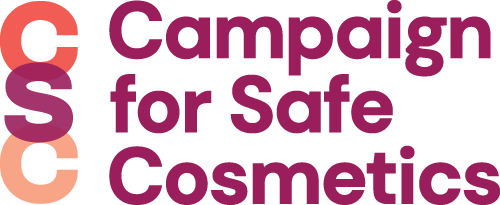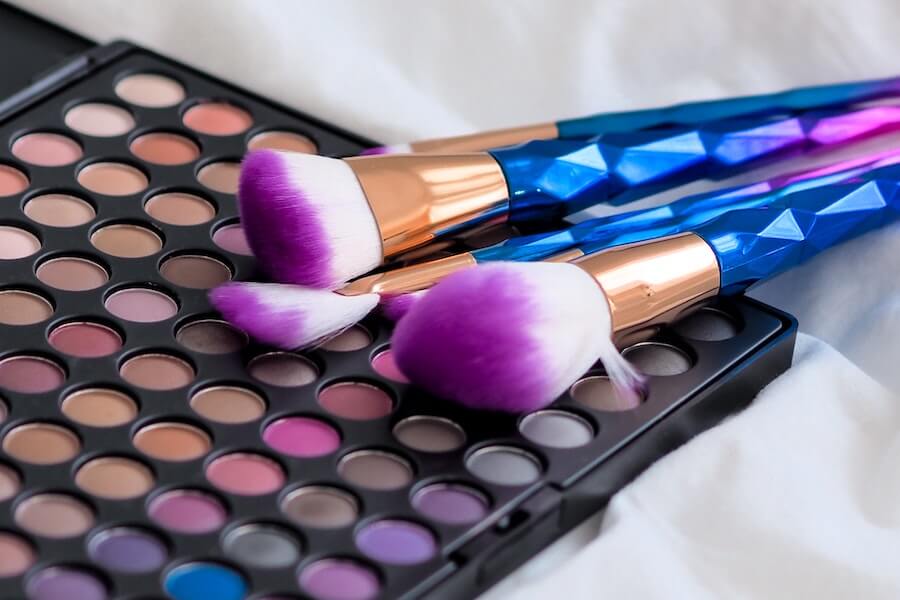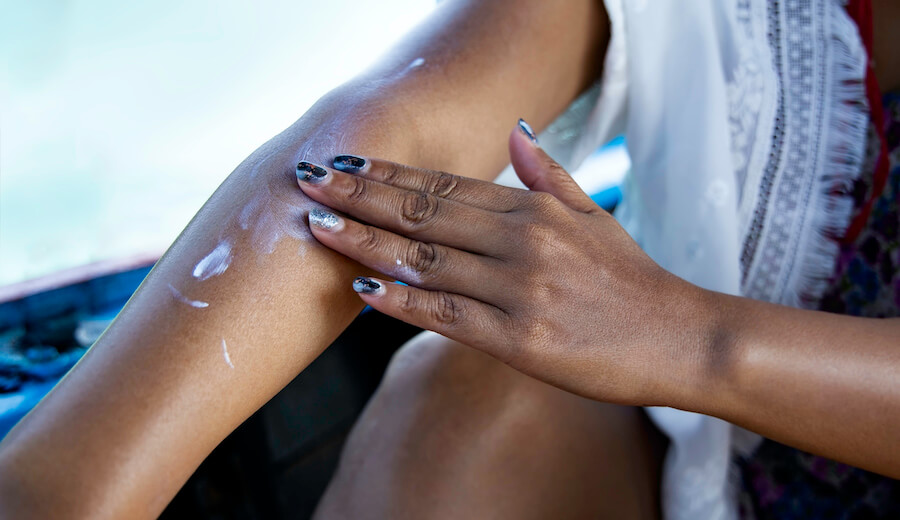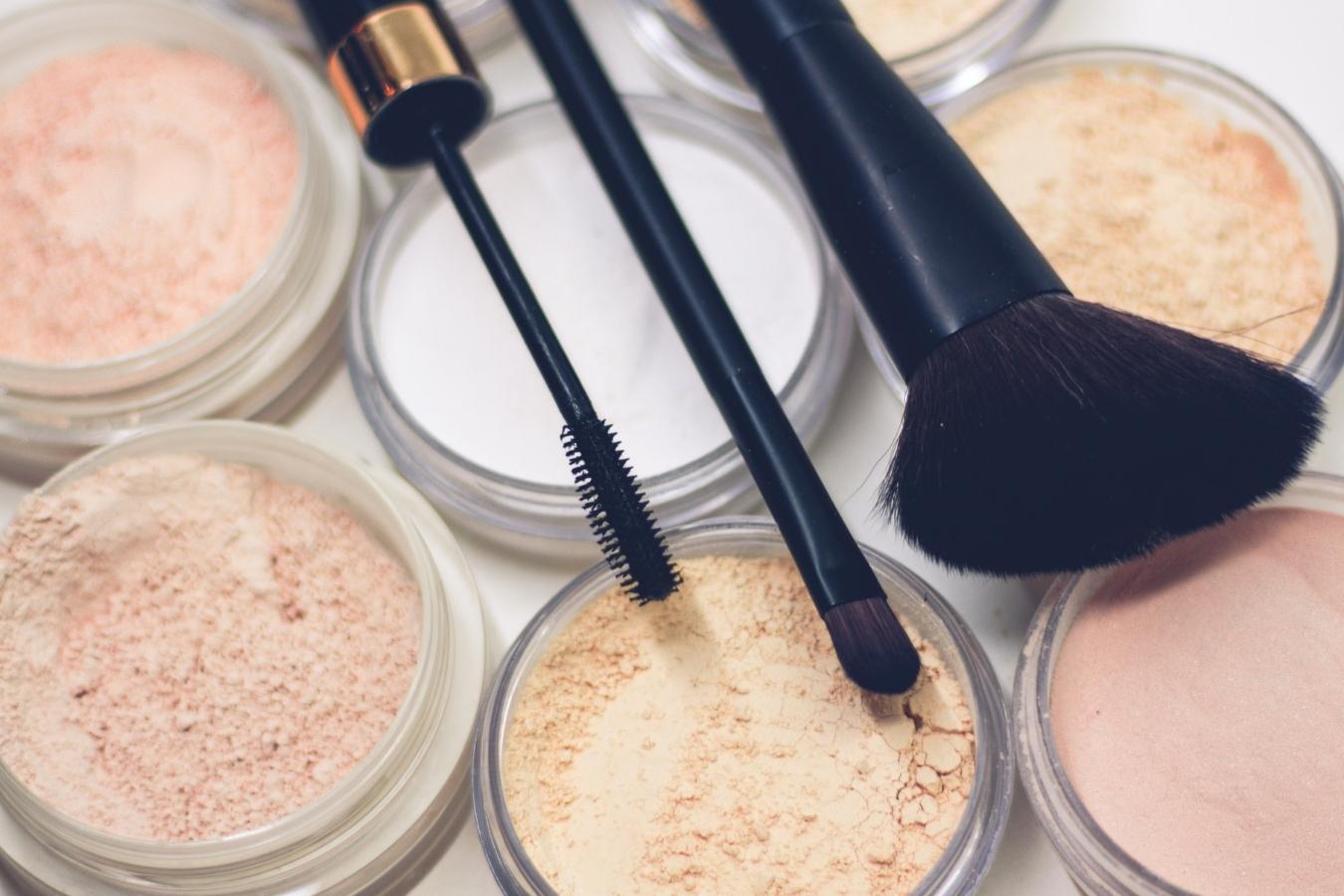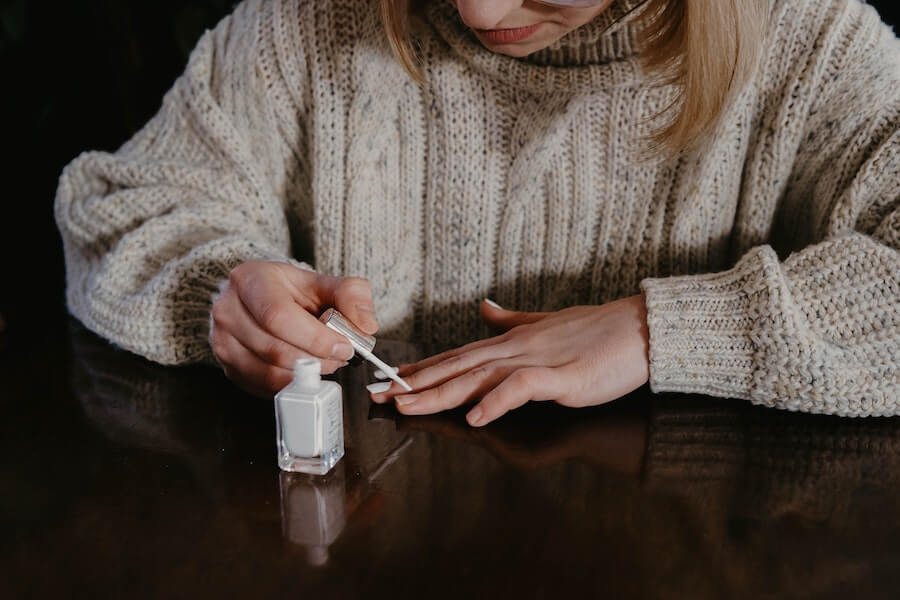[1] European Chemicals Agency (ECHA). Dibutyl phthalates. Available online: https://echa.europa.eu/substance-information/-/substanceinfo/100.001.416. Accessed April 21, 2022.
[2] European Chemicals Agency (ECHA). Bis(2-ethylhexyl) phthalate. Available online: https://echa.europa.eu/substance-information/-/substanceinfo/100.003.829. Accessed April 21, 2022.
[3] European Chemicals Agency (ECHA). Dibutyl phthalates. Available online: https://echa.europa.eu/substance-information/-/substanceinfo/100.001.416. Accessed April 21, 2022.
[4] Byrdie.14 ‘5 free’ nail polish brands. Available online: https://www.byrdie.com/free-nail-polish-14-brands-worth-your-money-346730. Accessed April 21, 2022.
[5] Malkan, S. Not Just a Pretty Face: The Ugly Side of the Beauty Industry. Gabriola, BC, Canada: New Society Publishers, pp. 18-19. 2007.
[6] Houlihan J, Brody C, Schwan B (2002). Not Too Pretty: Phthalates, Beauty Products and the FDA. Available online: https://static.ewg.org/reports/2002/NotTooPretty.pdf?_ga=2.79541012.1878150350.1597799880-1583975922.1597799880. Accessed April 21, 2022.
[7] Archer L, Brody C, Malkan S, Sarantis H (2008). A Little Prettier. Available online: http://www.safecosmetics.org/wp-content/uploads/2015/02/A-Little-Prettier.pdf. Accessed April 21, 2022.
[8] Manori JS, et al., Urinary levels of seven phthalate metabolites in a human reference population. Environmental Health Perspectives, vol. 112, no. 3, pp 331-338, 2002. Available online: http://www.ncbi.nlm.nih.gov/pmc/articles/PMC1241863/pdf/ehp0112-000331.pdf. Accessed April 21, 2022.
[9] Manori JS, et al., Urinary levels of seven phthalate metabolites in a human reference population. Environmental Health Perspectives, vol. 112, no. 3, pp 331-338, 2002. Available online: http://www.ncbi.nlm.nih.gov/pmc/articles/PMC1241863/pdf/ehp0112-000331.pdf. Accessed April 21, 2022.
[10] Centers for Disease Control and Prevention (CDC). Fourth national report on human exposure to environmental chemicals, 2013. https://www.cdc.gov/exposurereport/pdf/FourthReport_UpdatedTables_Sep2013.pdf. Accessed April 21, 2022.
[11] European Commission. List of 146 substances with endocrine disruption classifications prepared in the espert meeting. Available online: http://ec.europa.eu/environment/archives/docum/pdf/bkh_annex_13.pdf. Accessed April 21, 2022.
[12] The Endocrine Disruption Exchange (TEDX). Diethyl phthalate. Available online: http://endocrinedisruption.org/popup-chemical-details?chemid=527. Accessed April 21, 2022.
[13]The Endocrine Disruption Exchange (TEDX). Di(2-ethylhexyl) phthalate. Available online: http://endocrinedisruption.org/popup-chemical-details?chemid=505. Accessed April 21, 2022.
[14] The Endocrine Disruption Exchange (TEDX). Dibutyl phthalate. Available online: http://endocrinedisruption.org/popup-chemical-details?chemid=510. Accessed April 21, 2022.
[15] Swan SH, et al., Decrease in Anogenital Distance among Male Infants with Prenatal Phthalate Exposure. Environmental Health Perspectives, vol. 113, pp 1056-1061, 2005. Available online: http://www.ncbi.nlm.nih.gov/pmc/articles/PMC1280349/pdf/ehp0113-001056.pdf. Accessed April 21, 2022.
[16] Breast Cancer Prevention Partners Glossary of Exposures: https://www.bcpp.org/resource/phthalates/. Accessed April 21, 2022.
[17] Swan SH, et al., Decrease in Anogenital Distance among Male Infants with Prenatal Phthalate Exposure. Environmental Health Perspectives, vol. 113, pp 1056-1061, 2005. Available online: http://www.ncbi.nlm.nih.gov/pmc/articles/PMC1280349/pdf/ehp0113-001056.pdf. Accessed April 21, 2022.
[18] Main KM, et al., Human breast milk contamination with phthalates and alterations of endogenous reproductive hormones in infants three months of age. Environmental Health Perspectives, vol. 114, pp 270-276, 2006. Available online: http://www.ncbi.nlm.nih.gov/pmc/articles/PMC1367843/pdf/ehp0114-000270.pdf. Accessed April 21, 2022.
[19]European Chemicals Agency (ECHA). Candidate list of substances of very high concern for authorization: DEHP. Available online: http://echa.europa.eu/web/guest/candidate-list-table. Accessed April 21, 2022.
[20]European Chemicals Agency (ECHA). Candidate list of substances of very high concern for authorization: DBP. Available online: http://echa.europa.eu/web/guest/candidate-list-table. Accessed April 21, 2022.
[21] Hauser R, et al., DNA damage in human sperm is related to urinary levels of phthalate monoester and oxidative metabolites. Human Reproduction, vol. 22, pp 688-695, 2007. Available online: http://humrep.oxfordjournals.org/content/22/3/688.full.pdf+html. Accessed April 21, 2022.
[22] Jurewicz J. & Hanke W., Exposure to phthalates: reproductive outcome and children health. A review of epidemiological studies. International Journal of Occupational Medicine and Environmental Health, vol. 24, no. 2, pp 115-41, 2011. Available online: http://www.ncbi.nlm.nih.gov/pubmed/21594692. Accessed April 21, 2022.
[23] Kamrin MA., Phthalate risks, phthalate regulation, and public health: a review. Journal of Toxicology and Environmental Health, Part B: Critical Reviews, vol. 12, pp 157-74, 2009. Abstract online: http://www.ncbi.nlm.nih.gov/pubmed/19235623. Accessed April 21, 2022.
[24] Pant N., et al., Environmental and experimental exposure of phthalate esters: The toxicological consequence on human sperm. Human and Experimental Toxicology, vol. 30, no. 6, pp 507-14, 2010. Abstract Available Online: http://www.ncbi.nlm.nih.gov/pubmed/20551087. Accessed April 21, 2022.
[25] Swan SH, et al., Decrease in Anogenital Distance among Male Infants with Prenatal Phthalate Exposure. Environmental Health Perspectives, vol. 113, pp 1056-1061, 2005. Available online: https://www.ncbi.nlm.nih.gov/pmc/articles/PMC1280349/. Accessed April 21, 2022.
[26] Main KM, et al., Human breast milk contamination with phthalates and alterations of endogenous reproductive hormones in infants three months of age. Environmental Health Perspectives, vol. 114, pp 270-276, 2006. Available online: http://www.ncbi.nlm.nih.gov/pmc/articles/PMC1367843/pdf/ehp0114-000270.pdf. Accessed April 21, 2022.
[27] Swan SH., Environmental phthalate exposure in relation to reproductive outcomes and other health endpoints in human. Environmental Research, vol. 108, pp 177-84, 2008. Available online: http://www.ncbi.nlm.nih.gov/pmc/articles/PMC1280349/pdf/ehp0113-001056.pdf. Accessed April 21, 2022.
[28] Gray LE, et al., Chronic di-n-butyl phthalate exposure in rats reduces fertility and alters ovarian function during pregnancy in female Long Evans hooded rats. Toxicological Science, vol. 93, no. 1, pp 189-95, 2006. Available online: http://toxsci.oxfordjournals.org/content/93/1/189.full.pdf+html. Accessed April 21, 2022.
[29] Gray LE, et al., Chronic di-n-butyl phthalate exposure in reats reduces fertility and alters ovarian function during pregnancy in female Long Evans hooded rats. Toxicological Science, vol. 93, no. 1, pp 189-95, 2006. Available online: http://toxsci.oxfordjournals.org/content/93/1/189.full.pdf+html. Accessed April 21, 2022.
[30] Tranfo G., et al., Urinary phthalate monoesters concentration in couples with infertility problems. Toxicology Letters, vol. 213, pp 15-20, 2012. Abstract Available online: http://www.ncbi.nlm.nih.gov/pubmed/22197707. Accessed April 21, 2022.
[31] Jurewicz J. & Hanke W., Exposure to phthalates: reproductive outcome and children health. A review of epidemiological studies. International Journal of Occupational Medicine and Environmental Health, vol. 24, no. 2, pp 115-41, 2011. Available online: http://www.ncbi.nlm.nih.gov/pubmed/21594692. Accessed April 21, 2022.
[32] Borch J, et al., Mechanisms underlying the anti-androgenic effects of diethylhelxyl phthalate in fetal rat testis. Toxicology, vol. 223, pp 144-155, 2006. Abstract Available online: http://www.ncbi.nlm.nih.gov/pubmed/16690193. Accessed April 21, 2022.
[33] Kang SC. & Lee BM., DNA methylation of estrogen receptor alpha gene by phthalates. Journal of Toxicology and Environmental Health Part A, vol. 68, pp 1995-2003, 2005. Abstract Available online: http://www.ncbi.nlm.nih.gov/pubmed/16326419. Accessed April 21, 2022.
[34] National Toxicology Program. Reports on Carcinogens, twelfth edition, 2011: Di(2-ethylhexyl) phthalate Available online: http://ntp.niehs.nih.gov/ntp/roc/twelfth/roc12.pdf. Accessed April 21, 2022.
[35] U.S. Environmental Protection Agency. IRIS: Di(e-ethylhexyl) phthalate (DEHP). Available online: https://cfpub.epa.gov/ncea/iris2/chemicalLanding.cfm?substance_nmbr=14. Accessed April 21, 2022.
[36] Kim IY, Han SY, Moon A. Phthalates inhibit tamoxifen-induced apoptosis in MCF-7 human breast cancer cells. Journal of Toxicology and Environmental Health, vol. 67, pp 2025-2035, 2004. Abstract Available online: http://www.ncbi.nlm.nih.gov/pubmed/15513900. Accessed April 21, 2022.
[37] Alam MS., et al., Induction of spermatogenic cell apoptosis in prepubertal rat testes irrespective of testicular steroidogenesis: a possible estrogenic effect of di(n-butyl) phthalate. Society of Reproduction and Fertility, vol. 139, pp 427-37, 2010. Available online: http://www.reproduction-online.org/content/139/2/427.full.pdf+html. Accessed April 21, 2022.
[38] Jobling S, Reynolds T, White R, Parker MG, Sumpter JP (1995). A variety of environmentally persistent chemicals, including some phthalate plasticizers, are weakly estrogenic. Environmental Health Perspectives 103(6):582-7. Available online: http://www.ncbi.nlm.nih.gov/pmc/articles/PMC1519124/pdf/envhper00355-0058.pdf. Accessed April 21, 2022.
[39] Chen FP. & Chien MH., Lower concentrations of phthalates induce proliferation in human breast cancer cells. Climacteric, vol. 17, no. 4, pp 377-84, 2014. https://pubmed.ncbi.nlm.nih.gov/24228746/. Accessed April 21, 2022.
[40] Centers for Disease Control and Prevention. NIOSH pocket guide to chemical hazards: naphtha (coal tar). Available online: https://www.cdc.gov/niosh/npg/npgd0438.html. Accessed April 21, 2022.
